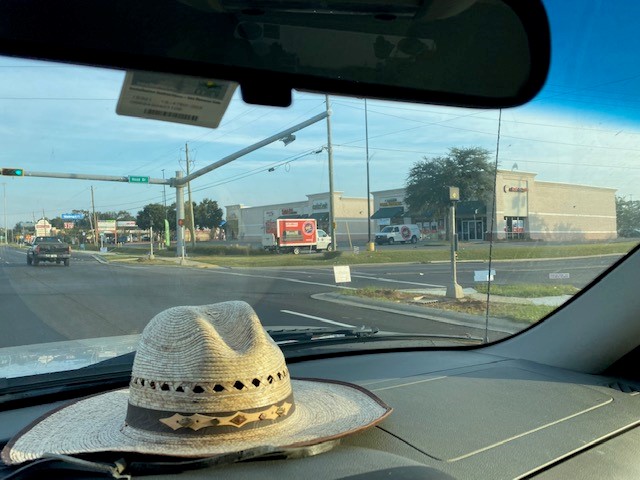As our human population grows, so grow urban and suburban areas – and our natural areas and farms are decreasing. Much of this will cause problems for us and other species on the planet as well. How do we manage this need for space?
Some cities such as Hong Kong and Tokyo have responded by building vertically. Large apartment complexes provide not only homes, by grocery stores and gyms. Most are located within walking distance from work – and if they are not close to work, they use mass transit. We see this in some cities in the American northeast as well. This is known as compact development and has been pushed by many city planners and demographers.

Heavy urban development “sprawls” away from the city in many U.S. communities. The “corridor” to work has become congested.
Photo: Rick O’Connor
However, the United States, Canada, and Australia are car dependent communities. Our car dependency began in the early 20th century when we had land to expand, gasoline was cheap, and cars actually became “part of us”. We did not just own cars we had specific cars with specific colors. They became part of our personality – and to get rid of them will be very difficult.
Some scientists and economists suggest one way to reduce car use, and the energy they require and pollution they generate, is what would be termed – user pays approach. Ideas such as taxes on gasoline have been suggested. The funds generated by such taxes could go to build bike paths and more mass transit systems. This has been tough to do in the U.S. because (a) most communities do not have an efficient mass transit system or bike paths, and (b) we do not want taxes. Other methods suggested to reduce car use include parking fees, toll roads, bridge tolls, etc.
There are some disadvantages to alternative methods of transportation. Bicycles do not protect you in bad weather, are impractical for long trips, and offer little protection in an accident. Mass transit rail systems are expensive to build and maintain, commit riders to set schedules, and are cost effective only in densely populated areas. Buses require low fares, and the bus companies lose money, can get caught in heavy traffic, and also require set schedules.
Other suggestions include better land use planning. Methods tried here include limit building permits, including green belts in community design, encouraging mixed use of homes and small businesses, and concentrating development along mass transit rail lines.
The bottom line is to concentrate humans in areas where they live close to where they work and the resources they need. Walkable cities will reduce the need for expansion into nearby land space and farms which will allow for more green spaces the ecological services they provide for our existence.
Reference
Miller, G.T., Spoolman, S.E. 2011. Living in the Environment. Brooks/Cole Cengage Learning. Belmont CA. pp. 674.
- Rattlesnakes on Our Barrier Islands; Part 4 – Thermoregulation - December 29, 2025
- Rattlesnakes on Our Barrier Islands; Part 3 – Envenomation - December 22, 2025
- St. Joe Red Tide Claiming Terrapins - December 15, 2025
